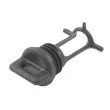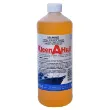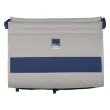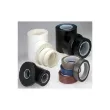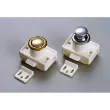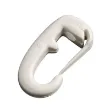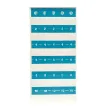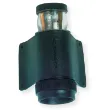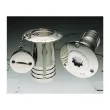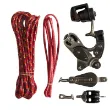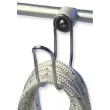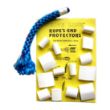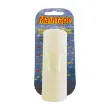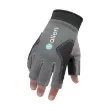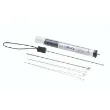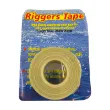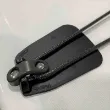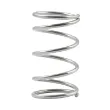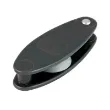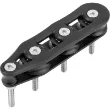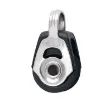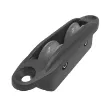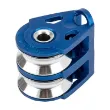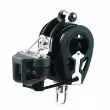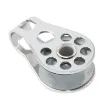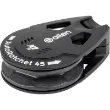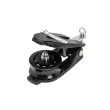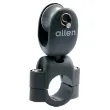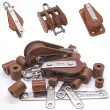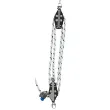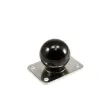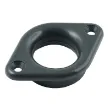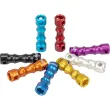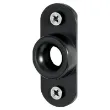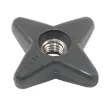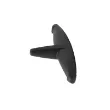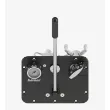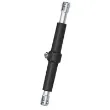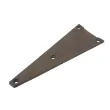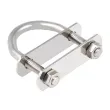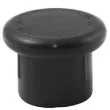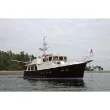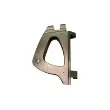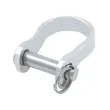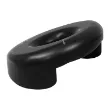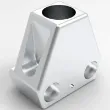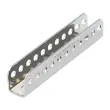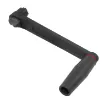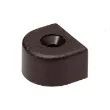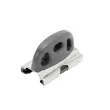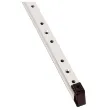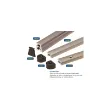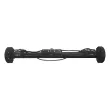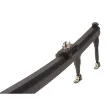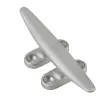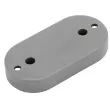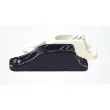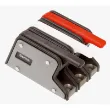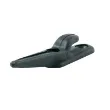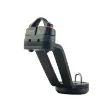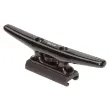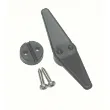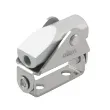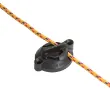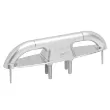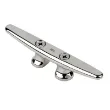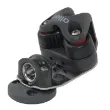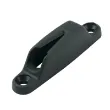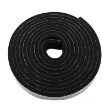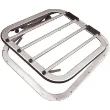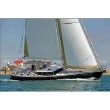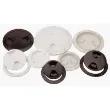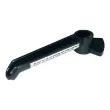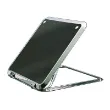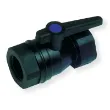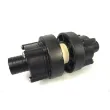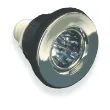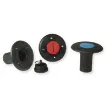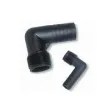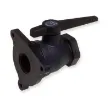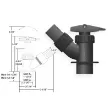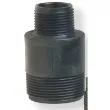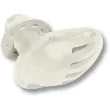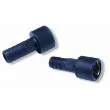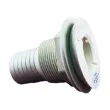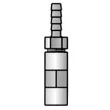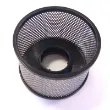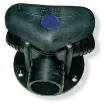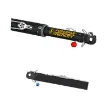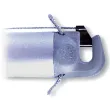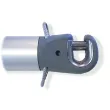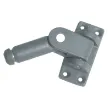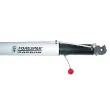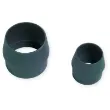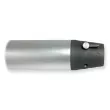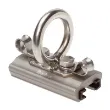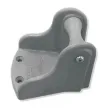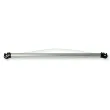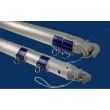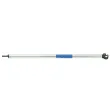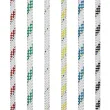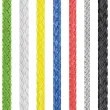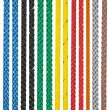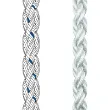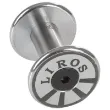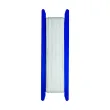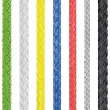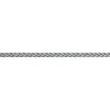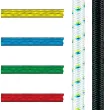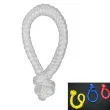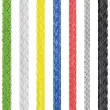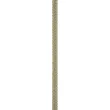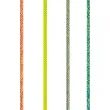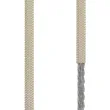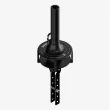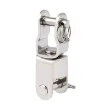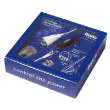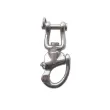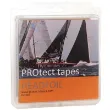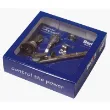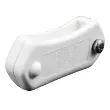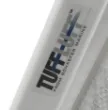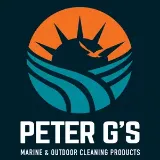 One must consider where you will store a whisker pole on the boat when not in use. Traditionally, poles have been stored on deck in deck chocks.
One must consider where you will store a whisker pole on the boat when not in use. Traditionally, poles have been stored on deck in deck chocks.
In recent years, storing poles vertically up the mast has become very popular. Forespar® also offers stanchion chocks that attach to your lifeline stanchions for pole storage. Storing the pole below may be a viable option for smaller boats. Poles left in the weather when the boat is not in use may corrode or seize due to lack of use. As with any deck equipment, proper care and maintenance will insure the whisker pole will work when you need it.
If you choose to store your pole up the mast, you must be aware of the proper style mast cars to facilitate this option. Not all mast cars will allow storing a pole vertically on the mast, as most were never designed for purpose. Ring cars do not work for mast storage-ours or any of many other ring cars made. They simply do not set out from the mast far enough and allow the inboard end fitting enough freedom of movement without binding to work. Remember, you have a substantial lever-arm and this leverage will bend or break the car or the end fitting on the pole.
Mast Storage
Only the Forespar® FC-125 flange style car (#332002) will work with “piston” or “latch” style end fittings (“EL”, “XP” and “TR” old style aluminum ends and “UXP” and “UTR” new “Ultra” style ends) and the T-125-S (#333004) “toggle” style cars for use with the Forespar “TS” & “UTS” style socket ends in vertical storage. These mast cars are designed to allow freedom of movement without binding and allow the poles to set out far enough from the mast so they will not bind and break inboard fittings.
You must have enough track height as well. You need at least one foot more track height than the stored length of the pole. This is so when you lift the pole up and out of the chock you won’t hit the track stop at the top. The track can start about 3 feet off the deck and then go up to the required height. This will allow you to mount the lower chock needed on the mast. The “inboard” end of the pole goes up and the “outboard” end is down where you can easily attach the topping lift and sheet to the end.
To further help complete the mast storage option; Forespar® has designed a Vertical Pole Storage Car (“VPC”) that links to the mast car (FC-125 or Toggle car) via a short tail (wire or line). This VPC car has a chock that holds the pole on the centerline of the mast. It also greatly reduces rattling when under power or at anchor. A pole that is not stabilized on the mast will make a racket as it flops from side to side at anchor. This noise, as you might imagine, will radiate down the spar and keep you awake all night!
For the bottom of the pole you would use the Forespar® DC-2 (#300002) deck chock. This chock must be mounted on the mast. It is best placed immediately above the mast boot, on the centerline of the front of the mast. Do not mount it on deck. Most boats have mast collars that place the chock too far from the mast. This forces the pole out from the mast and negates the VPC car’s function. The DC-2 has a flat base, so you may need to fashion a wood pad (Teak or Oak) to the curve of you mast. As each mast is different, it is impossible to make one chock fit all shapes and sizes out there. By attaching the DC-2 chock to the mast and using the VPC car up high on the track, linked under the mast car, the pole is secured and the outboard end (that ends up at the bottom) is captured in the chock so it won’t foul the jib sheets each time you tack. This rig has worked very well on hundreds of installations.
Boats going offshore in heavy air or cruisers doing ocean passages should always have deck chocks properly mounted on deck ready to accept the pole in bad weather. It is advisable to get the pole off the mast and secured on deck in bad weather. This weight and wind-age aloft can negatively affect the boats handling in a gale. In extreme weather, if the mast is carried away, you will want the whisker pole available for your emergency jury-rig!
We recommend that stanchion chocks not be used for offshore work as well. They place a large wetted surface on the stanchions and this can bend or break lifeline stanchions when punching through heavy seas. Again, deck chocks are what blue-water sailors rely on for safe pole storage.


